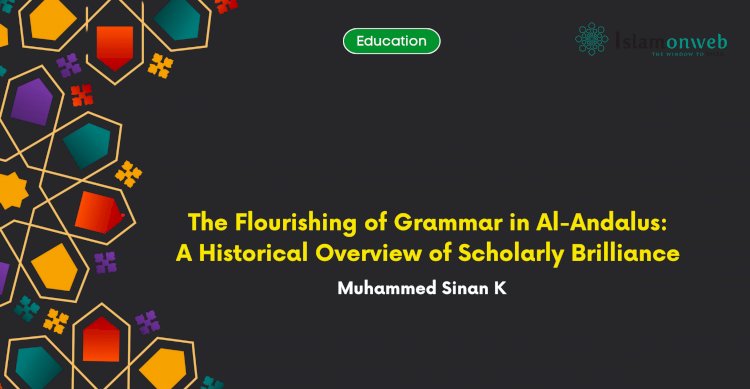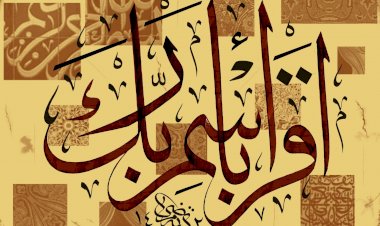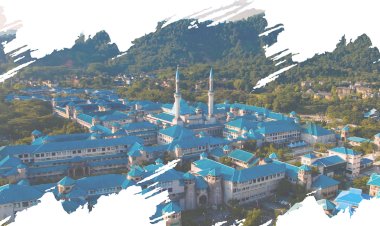The Flourishing of Grammar in Al-Andalus: A Historical Overview of Scholarly Brilliance
The annals of history often illuminate moments of cultural confluence, intellectual ferment, and scholarly brilliance that shape the fabric of civilizations. Among these epochs stands the vibrant narrative of Al-Andalus, a captivating chapter that unfolds the saga of linguistic metamorphosis and scholarly pursuits.
The conquest of Al-Andalus by the Muslim forces under the Umayyad Caliphate marked not only the expansion of territories but also ignited a transformative era of cultural amalgamation and intellectual crossroads. It witnessed the influx of Arabic, a language that would weave its way into the very essence of the Iberian Peninsula, heralding an era of linguistic refinement and scholarly exploration.
This article embarks on an illuminating journey through the corridors of time, tracing the genesis and evolution of grammatical studies in Al-Andalus. From its nascent stages amidst the Taifa kingdoms to the zenith of scholarly excellence in the 6th century, Al-Andalus became a crucible of diverse influences, fostering an intellectual milieu that transcended boundaries and left an indelible mark on linguistic scholarship.
Evolution, Multifaceted Contributions, and Enduring Legacy
The Muslims conquered Al-Andalus during the Umayyad Caliphate, led by Musā bin Nusair and the courageous Tariq bin Ziyād in the year 92 AH (711 AD). Arab tribes, such as the Adnanite and Qahtanite tribes, migrated there, leading to the dominance of the Arabic language over the original languages.
The beginnings of grammatical studies in Al-Andalus emerged around the middle of the second century AH. The study of grammar began to flourish during the era of the Taifa kingdoms. Juddi bin Uthman al-Marurori is considered the first precise grammarian. He journeyed to the Eastern lands and learned from renowned scholars such as Al-Riyāshī, Al-Farrā', and Al-Kisā'i. Juddi was the first to introduce their teachings to Al-Andalus.
This historical context highlights the Arab-Muslim expansion into the Iberian Peninsula, leading to linguistic and cultural transformations. The introduction of Arabic and the subsequent development of grammatical studies in Al-Andalus showcases the cross-cultural exchanges and influences that shaped the region's intellectual landscape.
The grammarians in Al-Andalus followed a method of selecting opinions from grammarians in Kufa and Basra, adding choices from Baghdadis, particularly Abu Ali al-Farsi and Ibn Junayd. They moved towards new opinions by incorporating numerous explanations and influences.
Grammar matured in the 6th century, and the Andalusians gained renown. Among them were Ibn Attiya al-Gharnāti (541 AH), Ibn Usfur (669 AH), and Ibn Mālik (672 AH).
This description outlines how grammarians in Al-Andalus adopted a methodology of selecting views from various schools of grammar, predominantly from Kufa and Basra, while also integrating opinions from Baghdad scholars. Their approach involved extensive explanations and influences, leading them to incorporate new ideas into the established grammatical theories.
Furthermore, the 6th century marked a significant maturity in the field of grammar in Al-Andalus, with notable figures like Ibn Attiya al-Gharnāti, Ibn Asfur, and Ibn Mālik contributing to its development and earning recognition for their scholarly contributions in this era.
Multifaceted Contributions: Grammarians in Al-Andalus didn't solely focus on grammar; they made significant strides in various fields like linguistics, lexicography, rhetoric, and literary studies. This interdisciplinary approach enriched their understanding and analysis of language.
Cross-Cultural Influences: Al-Andalus served as a melting pot of cultures. Besides Arab contributions, the region witnessed interactions among Muslim, Christian, and Jewish scholars, fostering a rich exchange of ideas and knowledge. This multicultural environment contributed to the diversity of thought in grammatical studies.
Literary and Poetic Flourishing: The emphasis on grammar and language refinement had a profound impact on literature and poetry. The grammatical developments influenced poetic styles and structures, leading to a flourishing of literary works in Arabic, as well as the preservation and adaptation of pre-existing poetic forms.
Scholarly Networks: The grammarians of Al-Andalus were not isolated; they were part of extensive scholarly networks extending across the Islamic world. They exchanged manuscripts, corresponded with scholars from different regions, and participated in scholarly gatherings, contributing to the dissemination and evolution of grammatical ideas.
Legacy and Influence: The contributions of Andalusian grammarians endured beyond their time. Their works and methodologies continued to influence later generations of linguists and grammarians, both within the Muslim world and beyond, impacting language studies in Europe during the Renaissance.
Prominent scholars of al andalus
Ibn Maḍā
One of the most prominent grammarians of Al-Andalus was Ibn Maḍā, whose full name was Abū al-‘Abbās Ahmad ibn ‘Abd al-Rahman al-Qurṭubī (592 AH). He studied the book of Sībawayh under Ibn al-Rammāk and was considered an authority in Zahiri jurisprudence and Prophetic traditions.Ibn Mudhāfi‘ rejected analogy in religious sciences and matters related to it, opting to rely solely on the apparent meanings derived from the Quran and Hadith.
His works include: "Al-Mashriq," "Tanzīh al-Qur'ān ‘an mā Lā Yalīq bi al-Bayān" (Distinction of the Quran from What Is Inappropriate for Eloquence), and "Al-Radd ‘ala al-Nuḥāt" (Response to the Grammarians).
Ibnu 'Uṣfūr
He was Abu al-Hasan Ali ibn Mu'min al-Hadrami al-Ishbīli (663 AH), a leading figure in Arabic grammar in Al-Andalus during his time. He was a disciple of the Shalubin. He gained prominence for teaching grammar in various regions within his homeland.
Ibn Usfur authored various works on grammar and conjugation including:
"Al-Muqarrab," "Al-Mumti' fi al-Tasrif" , and "Mukhtasar al-Muhtasib li-Ibn Jinni." He stood with the earlier grammarians in his opinions, although at times, he might have deviated or formed independent views.
Ibn Mālik
His full name was Muhammad ibn Abdullah ibn Abdullah ibn Mālik, born in 600 AH. He spent some time studying under the Shalubin scholars in Al-Andalus. Ibn Malik was exceptionally well-versed in the works and opinions of grammarians.
He had a distinctive approach to grammatical referencing, preferring citations from the Quran, then from the Hadith if Quranic references were unavailable, and finally resorting to Arabic poetry. His notable works include "Al-Kāfiya al-Shāfiya" and "Al-Khulāṣah," (Populary known as Alfiyat ibn Malik) which garnered extensive explanations and were studied in Arab universities and beyond.
Abu Hayyān
His full name was Muhammad ibn Yusuf, born in 654 AH. He was a polymath—a grammarian, linguist, exegete, Hadith scholar, Quranic reciter, and literary figure of his time. Abu Hayyan studied under Bahāʾ al-Dīn Ibn al-Nahhās, who was a student of Ibn Mālik. He held the opinion that the best early grammatical book was Sibawayh's, while the finest among the later works was Ibn Mālik's "Al-Tasheel."
Among his works are "Al-Bahr al-Muhit," "Al-Irtishaf," and "Al-Tadhkira fi al-Arabiyya," which covered various aspects of Arabic language and more.
Conclusion:
The enduring contributions of Andalusian grammarians continue to reverberate through history. Their works and methodologies transcended temporal boundaries, influencing subsequent generations of linguists and grammarians, leaving an indelible mark on language studies across the Islamic world and Europe, ultimately shaping the Renaissance.
Overall, the journey of grammar in Al-Andalus stands as a testament to the profound impact of scholarly exchanges, cultural amalgamation, and intellectual evolution on the shaping of linguistic studies and intellectual landscapes.
References
Shawki, Muhammad Abdur Rahman. (2003) Madāris al-naḥwiyyah Cairo: Dar al-Ma'arif.
Binaghi, F. (2018). A historical overview and annotated bibliography of the studies on the Arabic grammatical tradition in al-Andalus. Histoire Épistémologie Langage,
Saqer, F., & Aseedi, A. (2006). Al-Andalus Grammarians' Efforts in Facilitating Arabic Grammar.
About the author
Muhammed Sinan K is a research scholar pursuing a degree in Arabic Language and Literature at Darul Huda Islamic University
Disclaimer
The views expressed in this article are the author’s own and do not necessarily mirror Islamonweb’s editorial stance.
























Leave A Comment